A Comparative Analysis of Hazelnuts and Peanuts: Exploring Their Diversity and Health Benefits Introduction: Hazelnuts and peanuts are both popular nuts that people enjoy consuming around the world. While they share some similarities, such as being a good source of healthy fats and having a rich, nutty flavor, they also exhibit significant differences in terms of taste, nutritional profile, and culinary applications. This article aims to provide a comparative analysis of hazelnuts and peanuts, exploring their diversity in terms of origin, flavor profile, nutrient content, culinary uses, and health benefits. Origin and Cultivation: Hazelnuts, also known as filbert nuts, are the fruit of the hazel tree, which is native to Europe and Asia. Today, Turkey is the leading producer of hazelnuts, followed by Italy and the United States (primarily Oregon). In contrast, peanuts are legumes that originated in South America, and Africa is currently the largest producer of peanuts, followed by Asia and the Americas. They are grown in warm climates and can be found in various types, such as Valencia peanuts, Spanish peanuts, and Virginia peanuts. Flavor and Culinary Uses: One of the key differences between hazelnuts and peanuts lies in their flavor profiles. Hazelnuts have a sweet, buttery taste with a mild crunch. They are commonly used in confections, such as chocolates and pastries, and are a popular addition to desserts like hazelnut spreads and ice creams. Hazelnuts can also be ground into a flour-like consistency for baking purposes. In contrast, peanuts have a slightly earthy and nutty flavor. They are versatile and widely used in both savory and sweet dishes. Peanuts are commonly enjoyed in the form of peanut butter, peanut oil, and roasted peanuts. They are also key ingredients in various cuisines, such as Asian stir-fries, African stews, and American desserts.
nuts
 Nutritional Content: Both hazelnuts and peanuts are nutrient-dense foods, providing various essential vitamins, minerals, and healthy fats. However, there are some differences in their nutritional profiles. Hazelnuts are a rich source of monounsaturated fats, which are heart-healthy and can help reduce the risk of cardiovascular diseases. They are also high in vitamin E, which is an antioxidant that protects cells from damage, and contain significant amounts of dietary fiber, protein, and magnesium. Moreover, hazelnuts offer a good amount of B vitamins, such as folate and vitamin B6. Peanuts, on the other hand, are an excellent source of plant-based protein, making them a valuable addition to vegetarian and vegan diets. They also contain monounsaturated fats, vitamin E, magnesium, dietary fiber, and B vitamins. Additionally, peanuts are a rich source of resveratrol, a polyphenol compound with antioxidant and anti-inflammatory properties, which contributes to their potential health benefits. Culinary and Health Benefits: Hazelnuts and peanuts both offer numerous culinary and health benefits, making them valuable additions to a well-balanced diet. 1. Culinary Benefits: – Hazelnuts: These nuts are a popular choice in the culinary world due to their distinct flavor and versatility. They can be incorporated into various dishes, such as salads, roasted vegetable dishes, baked goods, and desserts. Hazelnut oil is also commonly used in dressings, sauces, and marinades. – Peanuts: Peanuts are highly versatile and can be enjoyed in different forms. They can be roasted and salted as a snack, ground into butter, or pressed to obtain peanut oil. Peanuts also play a vital role in recipes for sauces, soups, curries, and baked goods. 2. Health Benefits: – Hazelnuts: Hazelnuts possess numerous health benefits due to their nutrient density. They promote heart health by reducing bad cholesterol levels and lowering the risk of cardiovascular diseases. The vitamin E content in hazelnuts acts as an antioxidant, protecting cells from damage caused by free radicals. Their high fiber content aids in proper digestion and helps maintain a healthy weight. Hazelnuts also provide essential minerals like magnesium, which supports bone health.
Nutritional Content: Both hazelnuts and peanuts are nutrient-dense foods, providing various essential vitamins, minerals, and healthy fats. However, there are some differences in their nutritional profiles. Hazelnuts are a rich source of monounsaturated fats, which are heart-healthy and can help reduce the risk of cardiovascular diseases. They are also high in vitamin E, which is an antioxidant that protects cells from damage, and contain significant amounts of dietary fiber, protein, and magnesium. Moreover, hazelnuts offer a good amount of B vitamins, such as folate and vitamin B6. Peanuts, on the other hand, are an excellent source of plant-based protein, making them a valuable addition to vegetarian and vegan diets. They also contain monounsaturated fats, vitamin E, magnesium, dietary fiber, and B vitamins. Additionally, peanuts are a rich source of resveratrol, a polyphenol compound with antioxidant and anti-inflammatory properties, which contributes to their potential health benefits. Culinary and Health Benefits: Hazelnuts and peanuts both offer numerous culinary and health benefits, making them valuable additions to a well-balanced diet. 1. Culinary Benefits: – Hazelnuts: These nuts are a popular choice in the culinary world due to their distinct flavor and versatility. They can be incorporated into various dishes, such as salads, roasted vegetable dishes, baked goods, and desserts. Hazelnut oil is also commonly used in dressings, sauces, and marinades. – Peanuts: Peanuts are highly versatile and can be enjoyed in different forms. They can be roasted and salted as a snack, ground into butter, or pressed to obtain peanut oil. Peanuts also play a vital role in recipes for sauces, soups, curries, and baked goods. 2. Health Benefits: – Hazelnuts: Hazelnuts possess numerous health benefits due to their nutrient density. They promote heart health by reducing bad cholesterol levels and lowering the risk of cardiovascular diseases. The vitamin E content in hazelnuts acts as an antioxidant, protecting cells from damage caused by free radicals. Their high fiber content aids in proper digestion and helps maintain a healthy weight. Hazelnuts also provide essential minerals like magnesium, which supports bone health.
Specifications of nuts
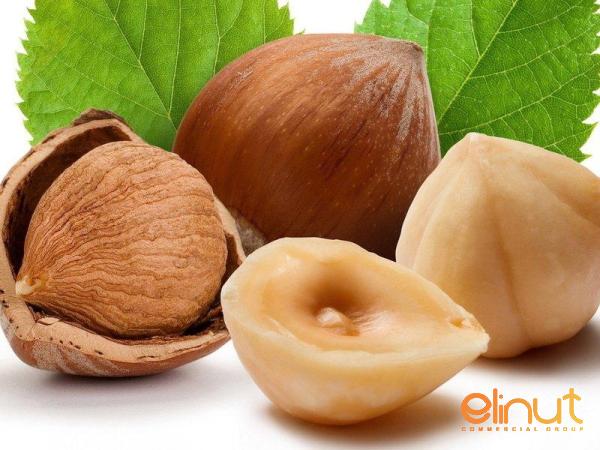 – Peanuts: Peanuts offer various health benefits as well. They are an excellent source of plant-based protein and can help maintain muscle mass. The monounsaturated fats present in peanuts contribute to heart health by reducing LDL cholesterol levels. Peanuts also contain resveratrol, which has been linked to anti-aging properties and reduced inflammation. Additionally, the high levels of niacin, folate, and other B vitamins in peanuts support brain health and aid in energy metabolism. Conclusion: In conclusion, hazelnuts and peanuts are unique and diverse nuts, each with its own distinct flavor profile, culinary uses, and health benefits. While hazelnuts are known for their sweet and buttery taste, peanuts offer an earthy and nutty flavor. Hazelnuts are a rich source of monounsaturated fats, vitamin E, and magnesium, while peanuts are abundant in plant-based protein, resveratrol, and B vitamins. Incorporating both hazelnuts and peanuts into a well-balanced diet can offer a wide range of health benefits and contribute to a variety of culinary creations. Whether you prefer the delicate sweetness of hazelnuts or the versatile nature of peanuts, both nuts can be enjoyed as part of a healthy lifestyle.Title: A Comparative Analysis of Hazelnuts and Peanuts: Exploring Their Diversity and Business Applications 1. Global Market Overview: The global market for nuts, including hazelnuts and peanuts, has witnessed significant growth in recent years. The increasing demand for healthier snack options and the rise in vegan and vegetarian diets have contributed to the popularity of these nuts. The market is highly competitive, with key players actively engaged in product innovation, expanding their product portfolios, and exploring new geographic markets. 2. Hazelnut Market Trends: Hazelnuts have experienced steady growth in demand, driven by their versatile applications in the food industry. The market is primarily fueled by the confectionery sector, where hazelnuts find use in chocolate manufacturing, bakery products, and spreads. The demand for hazelnut oil and hazelnut-based beverages is also on the rise. Furthermore, the hazelnut industry has undertaken efforts to promote hazelnut consumption as a healthy and nutritious snack. 3. Peanut Market Trends: Peanuts have a wider range of applications in the food industry compared to hazelnuts.
– Peanuts: Peanuts offer various health benefits as well. They are an excellent source of plant-based protein and can help maintain muscle mass. The monounsaturated fats present in peanuts contribute to heart health by reducing LDL cholesterol levels. Peanuts also contain resveratrol, which has been linked to anti-aging properties and reduced inflammation. Additionally, the high levels of niacin, folate, and other B vitamins in peanuts support brain health and aid in energy metabolism. Conclusion: In conclusion, hazelnuts and peanuts are unique and diverse nuts, each with its own distinct flavor profile, culinary uses, and health benefits. While hazelnuts are known for their sweet and buttery taste, peanuts offer an earthy and nutty flavor. Hazelnuts are a rich source of monounsaturated fats, vitamin E, and magnesium, while peanuts are abundant in plant-based protein, resveratrol, and B vitamins. Incorporating both hazelnuts and peanuts into a well-balanced diet can offer a wide range of health benefits and contribute to a variety of culinary creations. Whether you prefer the delicate sweetness of hazelnuts or the versatile nature of peanuts, both nuts can be enjoyed as part of a healthy lifestyle.Title: A Comparative Analysis of Hazelnuts and Peanuts: Exploring Their Diversity and Business Applications 1. Global Market Overview: The global market for nuts, including hazelnuts and peanuts, has witnessed significant growth in recent years. The increasing demand for healthier snack options and the rise in vegan and vegetarian diets have contributed to the popularity of these nuts. The market is highly competitive, with key players actively engaged in product innovation, expanding their product portfolios, and exploring new geographic markets. 2. Hazelnut Market Trends: Hazelnuts have experienced steady growth in demand, driven by their versatile applications in the food industry. The market is primarily fueled by the confectionery sector, where hazelnuts find use in chocolate manufacturing, bakery products, and spreads. The demand for hazelnut oil and hazelnut-based beverages is also on the rise. Furthermore, the hazelnut industry has undertaken efforts to promote hazelnut consumption as a healthy and nutritious snack. 3. Peanut Market Trends: Peanuts have a wider range of applications in the food industry compared to hazelnuts.
Buy nuts
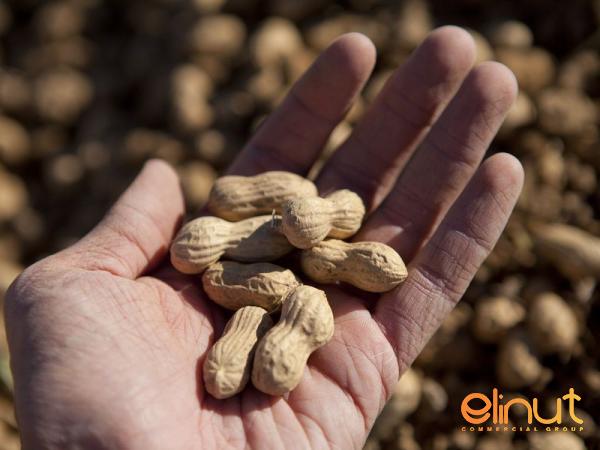 The peanut market is driven by peanut butter, which remains a highly popular product worldwide. Furthermore, the demand for peanuts as a snacking option has increased due to the perception of peanuts as a healthy source of protein, dietary fiber, and essential nutrients. Innovations such as flavored peanuts, roasted peanuts with unique seasonings, and peanut-based energy bars have gained traction in the market. 4. Hazelnut and Peanut-based Spreads: Hazelnut spreads, such as Nutella, have become a global phenomenon, driving the sales of hazelnuts. The popularity of these spreads has led to increased hazelnut production. Similarly, peanut butter continues to be one of the most consumed peanut-based products. The market for nut-based spreads is expanding, with manufacturers introducing organic, sugar-free, and exotic-flavored options to cater to health-conscious consumers. 5. Culinary Applications in Restaurants and Bakeries: Both hazelnuts and peanuts find extensive use in the culinary industry. Hazelnuts, with their delicate flavor and texture, are used in various savory dishes, such as salads, pasta, and poultry recipes. Hazelnut meal is also used as a gluten-free alternative in baking. Peanuts, on the other hand, are a staple in Asian cuisines and are used in stir-fries, sauces, and peanut-based soups. Bakeries often feature peanut-based desserts, cookies, and cakes. 6. Nut-based Snacks and Energy Bars: The rising interest in healthier snacking options has led to the emergence of nut-based snacks and energy bars. Hazelnuts and peanuts, being nutritious and satisfying, are key ingredients in these products. Companies have launched a wide range of nut-based snacks, incorporating hazelnuts and peanuts into granola bars, trail mixes, and protein bars. These snacks cater to the growing demand for convenient, on-the-go options. 7. Confectionery Industry: Hazelnuts have long been a vital ingredient in the confectionery industry, especially in the production of chocolates, pralines, and nougat. The unique flavor and crunchy texture of hazelnuts make them a sought-after ingredient for manufacturers. Peanuts, on the other hand, are used in various confectionery products, including peanut brittle, peanut clusters, and chocolate-coated peanuts. The confectionery industry provides considerable opportunities for both hazelnut and peanut producers. 8. Health Food Stores and Specialty Retailers: Hazelnuts and peanuts are commonly found in health food stores and specialty retailers.
The peanut market is driven by peanut butter, which remains a highly popular product worldwide. Furthermore, the demand for peanuts as a snacking option has increased due to the perception of peanuts as a healthy source of protein, dietary fiber, and essential nutrients. Innovations such as flavored peanuts, roasted peanuts with unique seasonings, and peanut-based energy bars have gained traction in the market. 4. Hazelnut and Peanut-based Spreads: Hazelnut spreads, such as Nutella, have become a global phenomenon, driving the sales of hazelnuts. The popularity of these spreads has led to increased hazelnut production. Similarly, peanut butter continues to be one of the most consumed peanut-based products. The market for nut-based spreads is expanding, with manufacturers introducing organic, sugar-free, and exotic-flavored options to cater to health-conscious consumers. 5. Culinary Applications in Restaurants and Bakeries: Both hazelnuts and peanuts find extensive use in the culinary industry. Hazelnuts, with their delicate flavor and texture, are used in various savory dishes, such as salads, pasta, and poultry recipes. Hazelnut meal is also used as a gluten-free alternative in baking. Peanuts, on the other hand, are a staple in Asian cuisines and are used in stir-fries, sauces, and peanut-based soups. Bakeries often feature peanut-based desserts, cookies, and cakes. 6. Nut-based Snacks and Energy Bars: The rising interest in healthier snacking options has led to the emergence of nut-based snacks and energy bars. Hazelnuts and peanuts, being nutritious and satisfying, are key ingredients in these products. Companies have launched a wide range of nut-based snacks, incorporating hazelnuts and peanuts into granola bars, trail mixes, and protein bars. These snacks cater to the growing demand for convenient, on-the-go options. 7. Confectionery Industry: Hazelnuts have long been a vital ingredient in the confectionery industry, especially in the production of chocolates, pralines, and nougat. The unique flavor and crunchy texture of hazelnuts make them a sought-after ingredient for manufacturers. Peanuts, on the other hand, are used in various confectionery products, including peanut brittle, peanut clusters, and chocolate-coated peanuts. The confectionery industry provides considerable opportunities for both hazelnut and peanut producers. 8. Health Food Stores and Specialty Retailers: Hazelnuts and peanuts are commonly found in health food stores and specialty retailers.
nuts + buy and sell
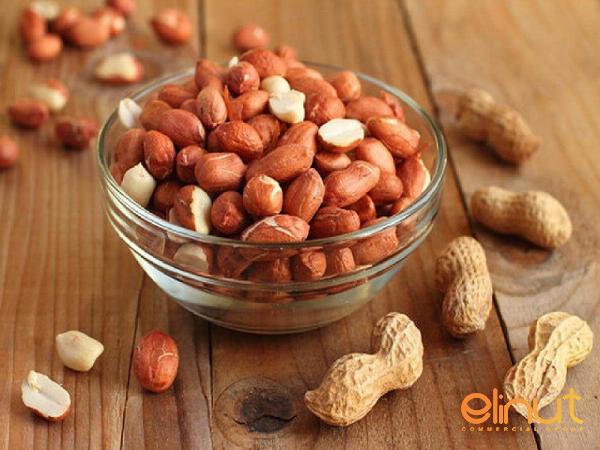 These stores cater to health-conscious consumers seeking organic, non-GMO, and sustainably sourced nut products. Hazelnuts and peanuts, in raw or roasted form, are sold as standalone snacks or as part of mixed nut assortments in these establishments. Specialty retailers also offer a variety of nut-based spreads, oils, and other niche products. 9. Nut Allergy Considerations: While hazelnuts and peanuts provide numerous health benefits, it is essential to address the potential allergenic properties of these nuts. Nut allergies are prevalent, and individuals with allergies may need to avoid hazelnuts and peanuts altogether. Food manufacturers must follow strict regulations for allergen labeling and cross-contamination prevention to ensure the safety of allergic consumers. 10. Sustainable Farming Practices: Sustainability and responsible sourcing are increasingly important considerations in the nut industry. Hazelnut and peanut farmers are adapting sustainable farming practices to mitigate environmental impacts. This includes water conservation, ecosystem preservation, and responsible use of agricultural inputs. Companies that prioritize sustainable sourcing are likely to gain a competitive edge in the market while meeting the demands of environmentally conscious consumers. 11. Emerging Markets and Export Opportunities: The demand for hazelnuts and peanuts is not limited to established markets. Emerging markets, such as China, India, and Brazil, present significant growth potential. These markets offer opportunities for hazelnut and peanut producers to expand their operations and tap into new consumer bases. Export-oriented businesses can focus on building partnerships with local distributors and leveraging the growing awareness of health benefits associated with nut consumption. 12. Future Outlook and Challenges: The hazelnut and peanut markets are expected to witness sustained growth in the coming years, driven by increasing consumer awareness of the health benefits associated with nut consumption. However, challenges such as climate change, disease management, and market volatility may pose risks to the industry. To remain competitive, businesses need to invest in research and development, adopt sustainable practices, and explore innovative product offerings to meet evolving consumer demands. Conclusion: Hazelnuts and peanuts offer a diverse array of business opportunities in various sectors, including confectionery, spreads, culinary, snacks, and specialty retail. With their unique flavor profiles, nutritional benefits, and versatility, hazelnuts and peanuts continue to captivate global consumers. As the market evolves, businesses must stay abreast of emerging trends, prioritize sustainable practices, and innovate to meet the demands of health-conscious consumers seeking nutritious and delicious nut-centric products.
These stores cater to health-conscious consumers seeking organic, non-GMO, and sustainably sourced nut products. Hazelnuts and peanuts, in raw or roasted form, are sold as standalone snacks or as part of mixed nut assortments in these establishments. Specialty retailers also offer a variety of nut-based spreads, oils, and other niche products. 9. Nut Allergy Considerations: While hazelnuts and peanuts provide numerous health benefits, it is essential to address the potential allergenic properties of these nuts. Nut allergies are prevalent, and individuals with allergies may need to avoid hazelnuts and peanuts altogether. Food manufacturers must follow strict regulations for allergen labeling and cross-contamination prevention to ensure the safety of allergic consumers. 10. Sustainable Farming Practices: Sustainability and responsible sourcing are increasingly important considerations in the nut industry. Hazelnut and peanut farmers are adapting sustainable farming practices to mitigate environmental impacts. This includes water conservation, ecosystem preservation, and responsible use of agricultural inputs. Companies that prioritize sustainable sourcing are likely to gain a competitive edge in the market while meeting the demands of environmentally conscious consumers. 11. Emerging Markets and Export Opportunities: The demand for hazelnuts and peanuts is not limited to established markets. Emerging markets, such as China, India, and Brazil, present significant growth potential. These markets offer opportunities for hazelnut and peanut producers to expand their operations and tap into new consumer bases. Export-oriented businesses can focus on building partnerships with local distributors and leveraging the growing awareness of health benefits associated with nut consumption. 12. Future Outlook and Challenges: The hazelnut and peanut markets are expected to witness sustained growth in the coming years, driven by increasing consumer awareness of the health benefits associated with nut consumption. However, challenges such as climate change, disease management, and market volatility may pose risks to the industry. To remain competitive, businesses need to invest in research and development, adopt sustainable practices, and explore innovative product offerings to meet evolving consumer demands. Conclusion: Hazelnuts and peanuts offer a diverse array of business opportunities in various sectors, including confectionery, spreads, culinary, snacks, and specialty retail. With their unique flavor profiles, nutritional benefits, and versatility, hazelnuts and peanuts continue to captivate global consumers. As the market evolves, businesses must stay abreast of emerging trends, prioritize sustainable practices, and innovate to meet the demands of health-conscious consumers seeking nutritious and delicious nut-centric products.



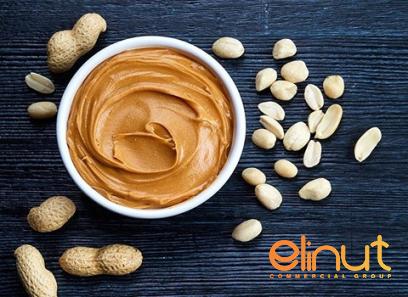

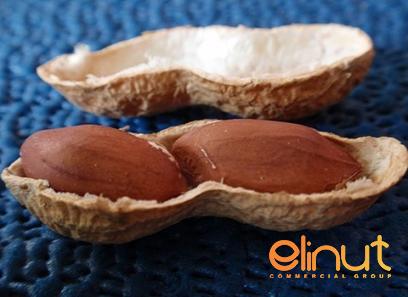
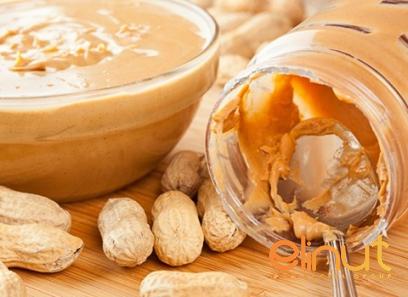
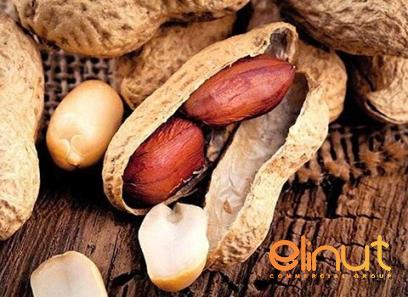
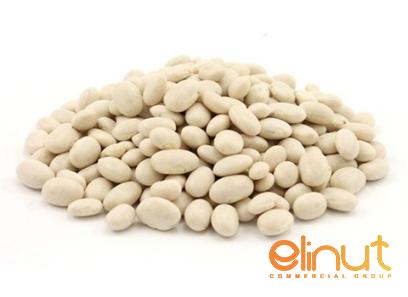

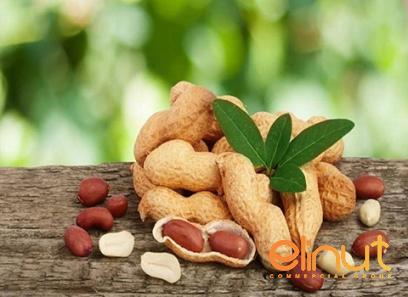
Your comment submitted.